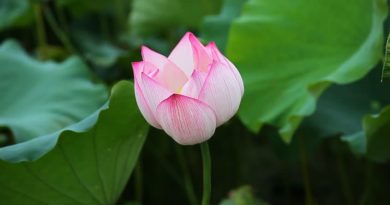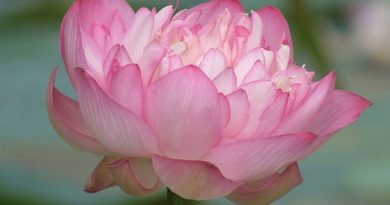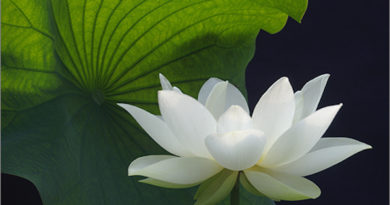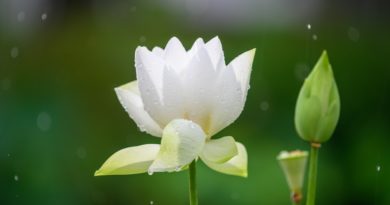FUNDAMENTALS OF VIPASSANA MEDITATION – CHAPTER XX: Truths
The goddess Uposatha continued,
“I come to live in this palace as a result of restraint and generosity.”
Here “restraint” is very important. Even in this world if there is no restraint in your spending you will become poor. If there is no restraint in your actions, you will infect diseases or get involved in crimes. As for the next life, restraint is important as it can purify the heart. That generosity can lead one to the deva worlds is common knowledge among Buddhists.
She said,
“I knew the noble truths.”
The Noble Truths are truths to be known by, made known to, the Noble Ones or the Ariyans. Once you understand these truths by yourself, you become an Ariyan. They are the truth of suffering, the truth of the cause, the truth of the cessation of suffering, and the truth of the path leading to the cessation of suffering. This is the most important part.
“To know the noble truths”
does not mean to learn of them from hearsay. It means realisation by yourself. You should understand them well, give up what ought to be given up, realise (the end), and make become (the path) in yourself. So goes the commentary.
The five aggregates of grasping we have discussed constitute the truth of suffering. So noting the aggregates and understanding them is understanding the truth of suffering. As you note, you see how they arise and pass away, how they constitute suffering. Thus you understand while meditating. When you reach the Ariyan Path, you see Nibbana, the end of suffering, and on reflection understand that whatever has not come to an end is suffering. Thus you understand at the Path moment. It is not understanding by way of attention to the object, but rather by way of function.
As you meditate, there can be no craving on the object meditated on. This is understanding by way of giving up. On reflection, no craving will arise on objects you have seen to be impermanent, suffering, and not self. It has been extinguished. This is how you understand while meditating. When you realise the Ariyan Path and Nibbana, no craving will ever arise with respect to the Path. With the path of Stream winning any gross craving that can lead one to the lower states is done away with. With Never returning, all cravings of the sense pleasure are put away. With Arahatship, all types of cravings.
Whenever you note, no defilements, no karma, so no sufferings, will arise in respect of the objects noted. All are extinguished. Such cessation of suffering is experienced with every act of noting. This is how you realise the truth (of cessation). At the Ariyan Path moment you realise Nibbana. This is obvious now.
Every time you meditate, right view regarding the true nature of mind and matter arises. Once there is right view its concomitants such as right thought arise too. We have dealt with them above. To make become the eight constituents of the Path is to develop the Path. It is how you understand while meditating. At the Ariyan Path moment the right constituents arise and Nibbana is realised. The one who has arrived at the Path and Fruition can see on reflection how the Ariyan Path has come to be. He sees. This, too, is understanding.
Thus, if you understand how mind and matter are sufferings, if you have given up craving which is the cause of suffering, if you realise the end of suffering, and if you make become the eight constituents of the path in you, we can say you know the four truths. So, when the goddess Uposatha said she knew the four Noble Truths, she meant she had seen the insight path and the Ariyan Path by her own experience. In other words, she was a stream winner.
Once you know the four truths you know the ariyan dhammas as well. We will give excerpts from the suttas:
” … the well instructed ariyan disciple, one who sees the ariyans, who is skilled in the ariyan dhamma”
If you are not an ariyan, you will not know by right wisdom what kind of person an ariyan is. Those who never been initiated into the Order will not know from personal experience how a monk behaves and lives. Those who have never taken up meditation will not know how a meditator behaves and lives. Only when you yourself are an ariyan will you discern who an ariyan is.
According to the commentary, the ariyan dhamma consists of the four establishments of mindfulness, four supreme efforts, four means of accomplishment, five faculties, five powers, seven factors of enlightenment, and eight path constituents – the parts of enlightenment. There are seven classes, If you know any one of the seven classics you know the other six. So we have said that if you know the four truths you know the ariyan dhamma. For the eightfold path which is one item of ariya dhamma is included in the four truths.
When you try to make become any of the seven classes like the establishment of mindfulness in you, you understand it from your own experience. This is true understanding. Learning from hearsay will not do.
“A monk when he walks is conscious I am walking.”
So the meditator who is going to be an ariyan, when he walks, walks noting either walking, walking, or lifting, pushing forward, putting down. As he so walks, mindfulness arises whenever he notes, as does knowledge that cognizes the object noted. You know how the intention to walk, the material form of walking, and the awareness arises and passes away. This mindfulness and knowledge that arise whenever you note constitute establishing mindfulness by way of contemplation of the body.
“He is aware I am feeling a painful feeling.”
The meditator notes hot, hot or pain, pain whenever there arises hotness or pain. Thus he is mindful and he knows how feelings arise and then pass away. This is establishing mindfulness by way of contemplation of feelings.
“He is aware of a passionate mind that it is passionate.”
Every time a thought or idea arises, the meditator notes clinging, delighting. He is thus mindful and knows how they arise and pass away. This is establishing mindfulness by way of contemplation of mind.
“One who has existing in himself a sensual desire is aware There is in me a sensual desire.”
The meditator notes desire, delight, and so on, and is mindful and knows how dispositions like sensual desires arise and pass away. This is establishing mindfulness by way of contemplation of mental factors.
Those of you who have been training here have been meditating and understanding from self experience. You get skilled in the ariyan dhamma, the four establishments of mindfulness. At the same time you are making the four supreme efforts, too. As you note, you are making an effort to discard evils that have arisen, or to prevent the arising of those evils not yet arisen, or to develop those good deeds of insight and path that have not yet arisen, or to augment the insight knowledge that has already arisen. The four means of accomplishment are involved too.
When you work, you have to rely on either will, effort, thought or reason. The five faculties of confidence, effort, mindfulness, concentration and wisdom are there, too. The five powers are the same as the five faculties. The seven factors of enlightenment, too, are there. When you note, you have mindfulness, investigation (of the dhamma), effort, rapture, quietude, concentration and equanimity. That the eightfold path is involved too need not be repeated here.
To go back to the story of the goddess Uposatha, she said,
“I kept the five precepts. I was a lay woman disciple of Gotama the Buddha. I often heard tell of Nandana and wanted to be there. As a result I came to be born here in Nandana.”
Nandana is the name of a garden in the deva world. In those days people talked so much of Nandana as they do of America or Europe these days. Uposatha heard people talk about the deva garden and wished to be born there. So was she born. But now she was not happy there. She got dissastified with her lot. She told Moggalana,
“I failed to do the Buddhas word.
Having turned my mind to this lowly plane, now am I full of repent.
The Buddha taught us life – whatever form it takes – is no god. It is mere suffering. He told us to work for the end of suffering. But Uposatha had disregarded the Buddhas teaching and longed for life in a deva world. Now she realised she had been mistaken.
You may ask,
“Well, why not work for the end of suffering in the deva world?”
It is not easy to work there. The devas are always singing, dancing and making merry. There is not a single quiet spot there as in the world of men. Well, even in this world of men, when you meditators return home, you cant work well, can you? So, work hard now.
The Venerable Moggallana cheered her up with these words,
“Dont worry, Uposatha. The Fully Enlightened One has declared that you are a Stream winner with special attainment. You are freed from the Bad Sphere.”
The young goddess is still at Tavatimsa. She has not been there long in the reckoning of the deva world. A century here equals a day there. From the Buddhass time till now it is 2500 years, which is only 25 days according to the Tavatimsa calendar. She is not yet a month old. If you attain special insight now, in forty fifty sixty years you will be born in the deva world, meet this goddess, and discuss the dhamma with her. If you have not got any insight, do not be discouraged. At least you will be born in the deva world.
Then ask the ariyan devas, listen to their teachings, and pay attention to what they teach. Then you will attain to the Path and Fruition. The corporeality of the devas is very pure. The consciousness that arises depending on this pure matter is keen and swift. So, if you remember what you have meditated on in your human existence, you will understand the arising and passing away of mind and matter and reach the Ariyan Path and Fruition in no time at all.
“The pieces of the dhamma flow to him in his happiness there. The arising of recollection, monks, is slow. But then quickly does that being reach special insight.”
An i. 505
A Sakyan woman, Gopika by name, who was a Stream winner, died and was born as a son of Sakka, the King of devas in Tavatimsa. There he saw three Gandhabba gods who had come to dance at his fathers palace. On reflection Gopaka (for it was his name now) saw that the three monks had been monks he bad worshipped in his former existence. He told them. Two of the gods remembered the dhamma they had practised, meditated on it, and there and then gained jhana, become Non returners and rose to Brahmapurohita world.
There are lots of gods and goddesses like Uposatha now living in the worlds of devas, who have practised the dhamma in the Buddhas time. There are gods like Gopaka who have been born as gods from women. All of them practised the dhamma just like you. It is very heartening. This is the ancient road. It is the road taken by the Ariyans. You must know that we are following this road. Every time you note you are walking along this road. As a traveller nears his destination with each step, you near Nibbana with each noting.
If the Path Fruition were to be reached in ten thousand notings, and if you now had a thousand notings, then you needed nine thousand more notings to reach it. If you had made nine thousand notings already, then you needed only a thousand more. If you had 9999 already, then the very next noting would be the Path process. The more you note, the nearer you come to the Path.
May you be able to note the five grasping aggregates whenever they arise at the six doors, may you realise their impermanence, suffering and not self, may you make progress in your insight, and may you realise Nibbana, the end of all sufferings!







